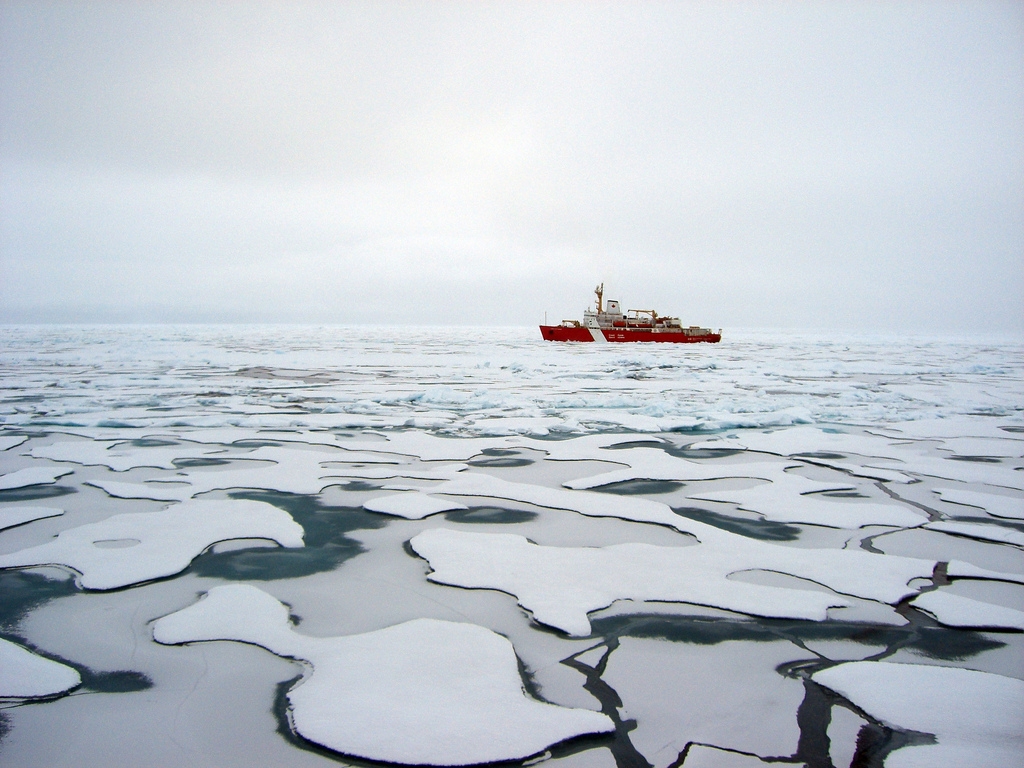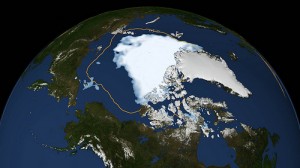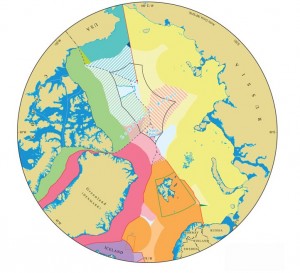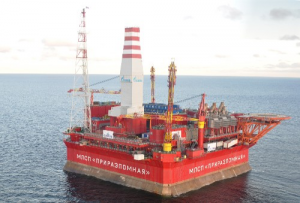
US Withdrawal from Arctic Drilling Cedes Leadership
The headlines say things like “Obama Bans Arctic Drilling” or “Obama Cracks Down of Offshore Oil Drilling.” A large part of these stories are about a reversal of Atlantic offshore drilling – but there was significant action in here on not having a new lease sale in the Arctic until at least 2022. There are two things to note here: first, unlike the President’s January 2015 proposal to create new “wilderness,” this does not preclude future Presidents from taking action, and second, this has no impact on the drilling that is already ongoing by other countries throughout the Arctic.
One of the ironies of the opening of the Arctic is that the very cause of the newfound interest in Arctic oil – global warming melting the sea ice – allows even more fossil fuels to be withdrawn. That irony, however, does not mean that any of the Arctic nations will (or should) choose to ignore the potential benefits of oil exploration. While some environmentalists have called President Obama a “hypocrite” for claiming to fight climate change while allowing Arctic drilling, that overlooks the realities of today’s energy system. Until there is a sustainable, economical replacement for oil, every Arctic nation will seek to drill for oil.
The Arctic is Closed For Five Years (Unless…)
 First, this is not an outright ban in perpetuity – this is a part of the Bureau of Energy Management’s (BOEM’s) five year plan, for 2017-2022. Oil companies can only explore on federal land or in federally administered offshore waters with a lease, sold at auction by BOEM. Under the current five year plan, there had been scheduled lease sales in both the Chukchi and Beaufort Seas north of Alaska, but after Shell withdrew from their offshore leases in October 2015, those lease sales were canceled by lack of interest.
First, this is not an outright ban in perpetuity – this is a part of the Bureau of Energy Management’s (BOEM’s) five year plan, for 2017-2022. Oil companies can only explore on federal land or in federally administered offshore waters with a lease, sold at auction by BOEM. Under the current five year plan, there had been scheduled lease sales in both the Chukchi and Beaufort Seas north of Alaska, but after Shell withdrew from their offshore leases in October 2015, those lease sales were canceled by lack of interest.
The collapse in global oil prices has brought about a collapse in investment by the oil and gas industry. There is probably nowhere in the world that requires a greater investment in infrastructure than the Arctic. In its seven years of trying to extract oil from the Arctic, Shell spent over $7 billion. So, it is no surprise that there’s little appetite in industry for another big high-risk endeavor in the Arctic.
If oil prices go back up, and there’s industry interest, and if a new President has different priorities for offshore drilling, it is possible to change that schedule.
Notably, this five year closure of Arctic waters may not even set back the date at which commercial production of oil starts. Even while they were exploring for Arctic oil in 2012 and 2015, Shell’s plans were for oil to only be produced in commercial volumes starting in the late 2020s or early 2030s. So, even if lease sales are put off until 2022, that still leaves 8 years of exploration before production could begin.
Every Other Arctic Nation is Drilling for Oil
Second, this announcement (obviously) only affects US Arctic waters – a very small piece of the divided pie that is the Arctic Ocean. And, every other Arctic state is either actively exploring for oil, of has plans to do so. The U.S. Geological Survey estimates that 90 billion barrels of oil, or 13 percent of the world’s undiscovered reserves, are within the Arctic. Russia, in particular, has been proactive about exploiting its Arctic resources. Russia’s “Policy for the Arctic to 2020” identified the Arctic as “a strategic resource base” that can provide “the solution of problems of social and economic development of the country.”
Gazprom’s Prirazlomnoye field has been producing commercial volumes of oil since 2012, and there are plans for expansion. However, the Russian oil and gas giants Rosneft and Gazprom require significant investments in both capital and technology to exploit these offshore resources – so they have looked to foreign partnerships to supply them. They have signed cooperation agreements with the Chinese National Petroleum Corporation (CNPC) and Sinopec of China, Petrovietnam of Vietnam, and others to provide funds and expertise to develop oil in Arctic. In 2011, Exxon Mobil had signed a deal with Rosneft to drill in the Arctic – a deal personally approved by President Putin – but with the implementation of increased sanctions on Russia over the Ukraine crisis, Exxon Mobil and other western firms have been forced to pull out of these deals.
Likewise, other countries like Norway, Denmark (via Greenland), Iceland, and Canada have also sought to promote offshore oil drilling in the Arctic. Norway, in particular, has been active in drilling its Arctic waters (which are predominantly ice free throughout the year due to warmer ocean currents). Many of these plans also include investments from outside these countries – increasing the geopolitical footprint of the Arctic. For instance, Greenland’s exploration is being led by Cairn Energy, a British firm, and the Icelandic consortium includes CNOOC, the Chinese National Oil Company.
A Withdrawal of American Geopolitical Influence
There is a real danger that, if the U.S. is not actively planning for, and promoting oil and gas drilling in its own waters, it will lose its ability to influence how these projects move forward. How to drill safely, sustainably, and productively in these waters is a tremendous challenge. American government managers at BOEM and safety regulators at The Bureau of Safety and Environmental Enforcement (BSEE) have devised strong oversight regimes for the Arctic, and they can help other Arctic nations do the same. Last summer, I participated in a U.S. State Department-sponsored conference in Reykjavik, Iceland that sought to bring American best-practices to Icelandic governance. There have been similar events in Greenland and Finland. However, now that the United States seems to be withdrawing from arctic drilling, we should be concerned that those invitations will no longer come.
Without energy exploration in American Arctic waters, then the American government would not have the standing to offer technical assistance and support to governments like Iceland or Greenland. In effect, the American government would cede the field to Chinese or Russian influence.
Each nation has to decide for itself whether the risks are worth the benefits: most of the nations of the Arctic have decided to explore for oil. Of course we should develop alternatives to oil. But, until we can drive our cars, fly our planes, and operate our ships on something other than petroleum, every country will seek to exploit their domestic reserves of oil. Americans cannot simply wish away the challenges of oil drilling.








